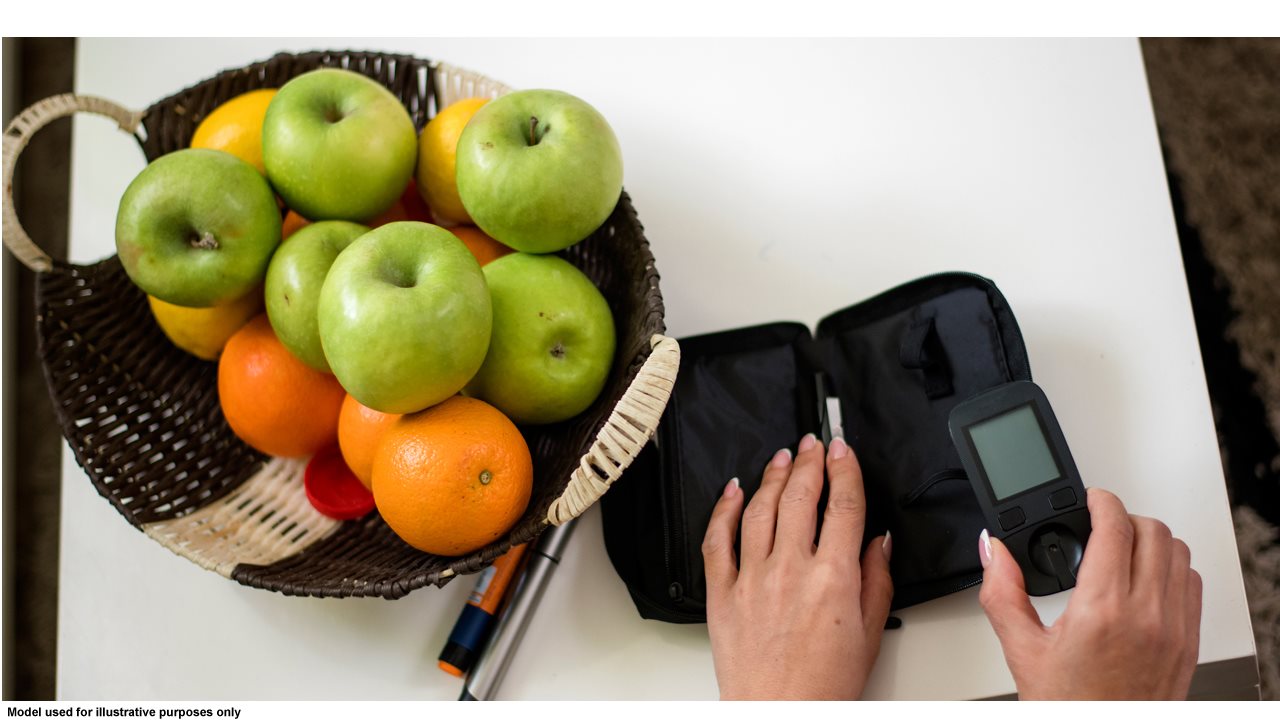2020-02-27T08:01:00
(BPT) – Sponsored by Takeda Oncology
An avid soccer player his whole life, Hans was used to the physical impact of the game. But at age 40, he slowly started to experience strange symptoms like exhaustion, weight loss and sporadic shakiness that impacted his abilities in the game and at home.
“After my soccer games, I would shake uncontrollably for 10 to 15 minutes. I would have night sweats. I didn’t realize at the time, but I’d lost about 20 pounds,” Hans said. After getting his blood test results from a routine doctor’s appointment, Hans learned he had chronic myeloid leukemia (CML), a type of rare blood cancer. He was shocked.
“When my doctor diagnosed me with CML, my spleen was about twice the size it was supposed to be, and I was tired all the time,” Hans said. “I didn’t realize at the time that CML is a chronic disease that I could have had for years before I realized I was actually sick. I was scared – at the time I had a two year old son and my wife was six months pregnant,” he said.
What is CML?
CML is one of four main types of a blood cancer known as leukemia. It is a result of a genetic mutation that takes place in the cells that form red blood cells, platelets and most types of white blood cells, which then turns the damaged cell into a CML cell. Though not always the case, CML can change into a fast-growing acute leukemia that is hard to treat, according to the American Cancer Society.
Q&A with Dr. James McCloskey
CML is rare and symptoms often are either hard to distinguish or are seemingly unrelated, like in Hans’s case. Because of this, patients are often diagnosed through routine bloodwork during regular doctor’s appointments. Patients with CML face a unique challenge because their treatment often needs to change over time. Roughly 24% of patients become resistant or intolerant to their initial TKI treatment, requiring these individuals to adjust their treatment regimen. While patients can live normal lives with treatment, it can be dangerous if their CML treatment stops working.
Treatment failure can be a challenging hurdle that many people living with CML face, and the cause of treatment failure is variable. This is why it’s crucial to be aware that multiple treatment options are available for CML: if one treatment fails, there may be alternatives available that target patients’ specific needs. It is important for patients to talk with their healthcare teams about the range of treatment options available and how to best manage side effects. Dr. James McCloskey, oncologist and leukemia researcher, answered key questions about CML:
How is CML diagnosed?
“Diagnosing CML can be difficult, especially in its early stages. In some cases, CML is identified by high white blood cell counts found in tests performed for other reasons. Then, we check for something called the Philadelphia chromosome, which is either found by testing the patient’s blood or bone marrow.”
What is the standard of care for CML?
“For first-line treatment, there are four approved treatments called tyrosine kinase inhibitors, or TKIs, which are the backbone for treatment of patients with CML. A TKI is a daily oral pill that is able to identify, attack and block proteins that cause uncontrolled CML growth.”
Is it possible that a TKI treatment can stop working?
“Unfortunately, yes. But it’s important to know that just because one TKI stops working, it does not mean that there aren’t other TKIs that can be tried instead. It’s relatively common for patients to become resistant or intolerant to a certain TKI, meaning that the TKI stops treating the disease or that the patient experiences side effects. Resistance can happen for a number of reasons, including changes to a person’s genetics. We identify this by regular blood tests, and if the patient’s blood counts become elevated, it’s critical to then assess if the treatment plan needs to be adjusted.”
What should a patient do if a TKI treatment stops working?
“If the first, or even second, TKI that we try does not work or stops working, I would partner closely with my patient to understand why – was it because of resistance or intolerance? If it’s because of resistance, there are other factors that we’ll need to consider before choosing the next TKI, like how many treatments have been tried and if the patient has developed any new genetic mutations which would be identified through mutational testing.”
Testing and treatment: Hans’s experience
Treatment resistance and intolerance are pertinent issues in treating CML. Since people can stop responding, or may never respond, to a certain TKI, it is important to consider the multiple options available. So if one treatment fails, there are alternatives available for patients that target their specific needs. Like many patients with CML, Hans’s cancer proved more difficult to manage, and he needed to become his own advocate and work closely with his doctor to explore other treatment options.
“Early on in my treatment journey, we were optimistic because my blood counts returned to normal in 30 days after starting treatment with the first TKI that I tried,” Hans said. “Unfortunately, after six months, I did not have adequate cytogenetic response, which meant the treatment wasn’t working even though I had started feeling better.”
Like Hans, many patients with CML do not experience new or worsening symptoms when their current treatments stop working which is why it’s important to receive blood tests on a regular basis. When Hans did not respond to a second TKI, his doctor conducted mutational testing which showed that Hans had the T315I mutation. While this is the most common genetic mutation in people living with CML, it is also the most difficult to treat.
ICLUSIG® (ponatinib) is a potent TKI that may be a suitable option for adults living with CML who have experienced prior treatment failure with TKIs. ICLUSIG is also the only approved treatment option that demonstrates activity against the most common genetic mutation, T315I, which can cause resistance to other TKIs. People should always consult with their healthcare team about which treatment is best and how to manage side effects. After discovering he had the T315I mutation, Hans and his doctor determined ICLUSIG to be an appropriate treatment option for him.
“I was thrilled to know that there was another treatment that I could try, even though my first two TKIs stopped working. I started taking ICLUSIG and it has been effective for the management of my CML,” said Hans. “After a year or so, the disease became virtually undetectable. There is no cure for CML, and I know I’m not free from the disease, but I take nothing for granted now.”
Not every patient will have the same experience, and all treatment decisions should be discussed with a doctor.
Sponsored by Takeda Oncology
About ICLUSIG (ponatinib) tablets
ICLUSIG is a kinase inhibitor primarily targeting BCR-ABL1, an abnormal tyrosine kinase that is expressed in chronic myeloid leukemia (CML) and Philadelphia chromosome-positive acute lymphoblastic leukemia (Ph+ ALL). ICLUSIG is a targeted cancer medicine developed using a computational and structure-based drug-design platform, specifically designed to inhibit the activity of BCR-ABL1 and its mutations. ICLUSIG targets native BCR-ABL1, as well as BCR-ABL1 treatment-resistant mutations, including the most resistant T315I mutation. ICLUSIG is the only approved TKI that demonstrates activity against the T315I gatekeeper mutation of BCR-ABL1. This mutation has been associated with resistance to all other approved TKIs. ICLUSIG received full approval from the FDA in November 2016.
IMPORTANT SAFETY INFORMATION
What is the most important information I should know about ICLUSIG® (ponatinib)?
ICLUSIG can cause serious side effects, including:
Blood clots or blockage in your blood vessels (arteries and veins). Blood clots or blockage in your blood vessels may lead to heart attack, stroke, or death. A blood clot or blockage in your blood vessels can prevent proper blood flow to your heart, brain, bowels (intestines), legs, eyes, and other parts of your body. You may need emergency surgery or treatment in a hospital. Get medical help right away if you get any of the following symptoms:
- chest pain or pressure
- pain in your arms, legs, back, neck or jaw
- shortness of breath
- numbness or weakness on one side of your body
- leg swelling
- trouble talking
- headache
- dizziness
- severe stomach area pain
- decreased vision or loss of vision
Blood clots or blockage in your blood vessels can happen in people with or without risk factors for heart and blood vessel disease, including people 50 years of age or younger. The most common risk factors for these problems are a history of high blood pressure (hypertension), high levels of fat in the blood (hyperlipidemia), and heart disease. Blood clots or blockages in your blood vessels happen more often in people as they get older, and in people with a past history of decreased blood flow, high blood pressure, diabetes, or high levels of fats in the blood.
Heart problems. ICLUSIG can cause heart problems, including heart failure which can be serious and may lead to death. Heart failure means your heart does not pump blood well enough. ICLUSIG can also cause irregular slow or fast heartbeats and heart attack. Your healthcare provider will check you for heart problems during your treatment with ICLUSIG. Get medical help right away if you get any of the following symptoms: shortness of breath, chest pain, fast or irregular heartbeats, dizziness, or feel faint.
Liver problems. ICLUSIG can cause liver problems, including liver failure, which can be severe and may lead to death. Your healthcare provider will do blood tests before and during your treatment with ICLUSIG to check for liver problems. Get medical help right away if you get any of these symptoms of liver problems during treatment:
- yellowing of your skin or the white part of your eyes (jaundice)
- dark “tea-colored” urine
- sleepiness
- loss of appetite
- bleeding or bruising
See “What are the possible side effects of ICLUSIG?” for information about side effects.
What is ICLUSIG?
ICLUSIG is a prescription medicine used to treat adults who have:
- chronic phase, accelerated phase, or blast phase chronic myeloid leukemia (CML) or Philadelphia chromosome positive acute lymphoblastic leukemia (Ph+ ALL) who cannot receive any other tyrosine kinase inhibitor (TKI) medicines
- a specific type of abnormal gene (T315I-positive) chronic phase, accelerated phase, or blast phase CML, or T315I-positive Ph+ ALL
ICLUSIG is not for use to treat people with newly diagnosed chronic phase CML.
It is not known if ICLUSIG is safe and effective in children less than 18 years of age.
Before you take ICLUSIG, tell your healthcare provider about all of your medical conditions, including if you:
- have a history of blood clots in your blood vessels (arteries or veins)
- have heart problems, including heart failure, irregular heartbeats, and QT prolongation
- have diabetes
- have a history of high cholesterol
- have liver problems
- have had inflammation of your pancreas (pancreatitis)
- have high blood pressure
- are pregnant or plan to become pregnant. ICLUSIG can harm your unborn baby.
- Your healthcare provider will do a pregnancy test before you start taking ICLUSIG.
- You should not become pregnant during treatment with ICLUSIG.
- For females who can become pregnant:
- Use an effective form of birth control during treatment and for 3 weeks after your last dose of ICLUSIG.
- Tell your healthcare provider right away if you become pregnant or think you might be pregnant during treatment with ICLUSIG.
- ICLUSIG may affect your ability to have children. Tell your healthcare provider if this is a concern for you.
- are breastfeeding or plan to breastfeed. It is not known if ICLUSIG passes into your breast milk. Do not breastfeed during treatment and for 6 days after your last dose of ICLUSIG.
- have bleeding problems
- plan to have surgery or have had a recent surgery. You should stop taking ICLUSIG at least 1 week before planned surgery. See “What are the possible side effects of ICLUSIG?”
- are lactose (milk sugar) intolerant. ICLUSIG tablets contain lactose.
- drink grapefruit juice
Tell your healthcare provider about all the medicines you take, including prescription medicines and over-the-counter medicines, vitamins, and herbal supplements. ICLUSIG and other medicines may affect each other causing side effects.
Know the medicines you take. Keep a list of them to show your healthcare provider and pharmacist when you get a new medicine.
How should I take ICLUSIG?
- Take ICLUSIG exactly as your healthcare provider tells you to take it.
- Swallow ICLUSIG tablets whole. Do not crush or dissolve ICLUSIG tablets.
- You may take ICLUSIG with or without food.
- If you miss a dose of ICLUSIG, take your next dose at your regular time. Do not take 2 doses at the same time to make up for a missed dose.
- If you take too much ICLUSIG, call your healthcare provider or go to the nearest hospital emergency room right away.
What are the possible side effects of ICLUSIG?
ICLUSIG may cause serious side effects, including:
- See “What is the most important information I should know about ICLUSIG?”
- High blood pressure. Your blood pressure should be checked regularly and any high blood pressure should be treated while you are taking ICLUSIG. Tell your healthcare provider if you get confusion, headaches, dizziness, chest pain or shortness of breath.
- Inflammation of the pancreas (pancreatitis). Tell your healthcare provider if you get any of the following symptoms: sudden stomach-area pain or discomfort, nausea, and vomiting. Your healthcare provider should do blood tests to check for pancreatitis during treatment with ICLUSIG.
- Neuropathy. ICLUSIG may cause damage to the nerves in your arms, brain, hands, legs, or feet (neuropathy). Tell your healthcare provider if you get any of these symptoms during treatment with ICLUSIG:
- muscle weakness, tingling, burning, pain, and loss of feeling in your hands and feet
- double vision and other problems with eyesight, trouble moving the eye, drooping of part of the face, sagging or drooping eyelids, and change in taste
- Effects on the eye. Serious eye problems that can lead to blindness or blurred vision may happen with ICLUSIG. Tell your healthcare provider if you get any of the following symptoms: bleeding in the eye, perceived flashes of light, light sensitivity, floaters, dry inflamed, swollen, or itchy eyes, and eye pain. Your healthcare provider will monitor your vision before and during your treatment with ICLUSIG.
- Severe bleeding. ICLUSIG can cause bleeding which can be serious and may lead to death. Tell your healthcare provider if you get any signs of bleeding during treatment with ICLUSIG including:
- vomiting blood or if your vomit looks like coffee-grounds
- pink or brown urine
- red or black (looks like tar) stools
- coughing up blood or blood clots
- unusual bleeding or bruising of your skin
- menstrual bleeding that is heavier than normal
- unusual vaginal bleeding
- nose bleeds that happen often
- drowsiness or difficulty being awakened
- confusion
- headache
- change in speech
- Fluid retention. Your body may hold too much fluid (fluid retention). Tell your healthcare provider right away if you get any of these symptoms during treatment with ICLUSIG:
- swelling of your hands, ankles, feet, face, or all over your body
- weight gain
- shortness of breath and cough
- Irregular heartbeat. ICLUSIG may cause an irregular heartbeat. Tell your healthcare provider right away if you experience loss of consciousness, fainting, dizziness, chest pain or palpitations.
- Low blood cell counts. ICLUSIG may cause low blood cell counts, which can be severe. Your healthcare provider will check your blood counts regularly during treatment with ICLUSIG. Tell your healthcare provider right away if you have a fever or any signs of an infection while taking ICLUSIG.
- Tumor Lysis Syndrome (TLS). TLS is caused by a fast breakdown of cancer cells. TLS can cause you to have:
- kidney failure and the need for dialysis treatment
- an abnormal heartbeat
-
Your healthcare provider may do blood tests to check for TLS.
- Reversible Posterior Leukoencephalopathy Syndrome (RPLS – also known as Posterior Reversible Encephalopathy Syndrome – PRES). ICLUSIG may trigger a condition called RPLS. Call your healthcare provider right away if you get headaches, seizures, confusion, changes in vision or problems thinking.
- Wound healing problems. Wound healing problems have happened in some people who take ICLUSIG. Tell your healthcare provider if you plan to have any surgery before or during treatment with ICLUSIG.
- You should stop taking ICLUSIG at least 1 week before planned surgery.
- Your healthcare provider should tell you when you may start taking ICLUSIG again after surgery.
- A tear in your stomach or intestinal wall (perforation). Tell your healthcare provider right away if you get:
- severe pain in your stomach-area (abdomen)
- swelling of the abdomen
- high fever
The most common side effects of ICLUSIG include:
- stomach-area (abdomen) pain
- skin rash
- constipation
- headache
- dry skin
- blood clots or blockage in blood vessels (arteries)
- tiredness
- high blood pressure
- fever
- joint pain
- nausea
- diarrhea
- increase in lipase levels (a blood test done to check your pancreas)
- vomiting
- muscle pain
- pain in arms, hands, legs, and feet
Your healthcare provider may change your dose, temporarily stop, or permanently stop treatment with ICLUSIG if you have certain side effects.
Talk to your doctor if you have a side effect that bothers you or does not go away. These are not all of the possible side effects of ICLUSIG. For more information, ask your healthcare provider or pharmacist.
To report SUSPECTED ADVERSE REACTIONS, contact Takeda at 1-844-817-6468 or FDA at 1-800-FDA-1088 or www.fda.gov/medwatch.
Please read the Medication Guide in the full Prescribing Information , including Important Serious Side Effects.
All trademarks are the property of their respective owners. ©2020Millennium Pharmaceuticals, Inc., a wholly owned subsidiary of Takeda Pharmaceutical Company Limited. All rights reserved
MAT-USO-ICL-19-00064 2/20


















